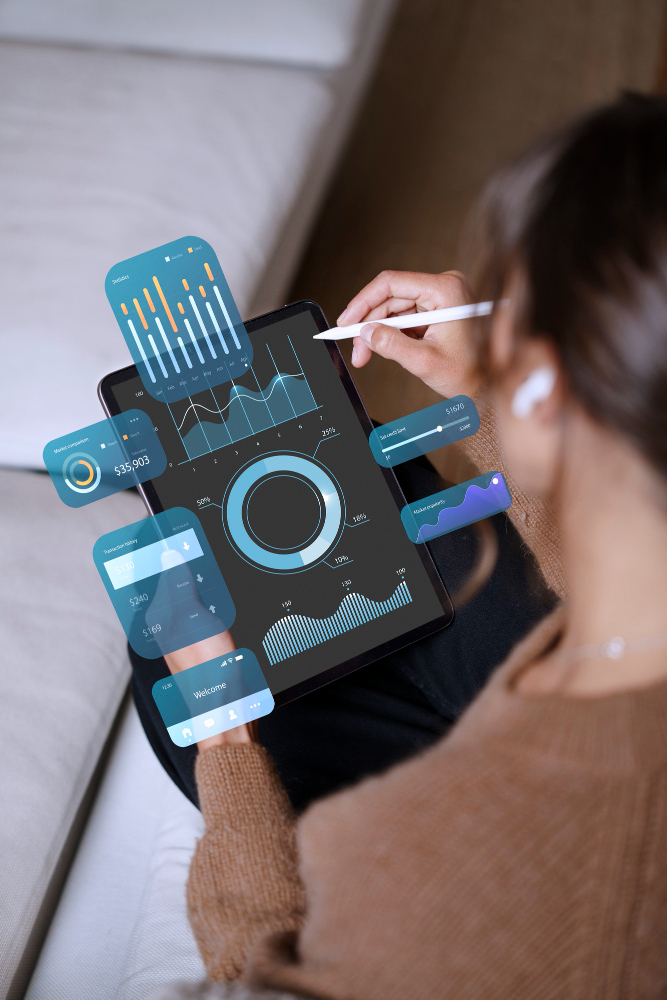The retail landscape is evolving faster than ever, driven by new technologies that provide a deeper understanding of customer behavior, store operations, and overall performance. Among these innovations, video analytics in retail industry has emerged as a powerful tool that goes beyond traditional surveillance. It’s no longer just about security cameras—it’s about intelligent data derived from them that fuels smarter business decisions.
Understanding Video Analytics in Retail
At its core, video analytics uses advanced computer vision and AI algorithms to interpret and analyze video footage in real time. Retailers install smart cameras throughout their stores, but instead of merely recording video, these cameras extract actionable insights. The data they capture—from customer footfall to shelf engagement—can be transformed into a strategic advantage.
This transition from passive surveillance to active intelligence is a game-changer. It allows retailers to see their operations through a new lens—one that provides quantifiable metrics and patterns that were previously invisible.
Enhancing Customer Understanding
One of the most critical applications of video analytics in retail is understanding how customers behave in-store. By analyzing movement patterns, dwell times, and heat maps, retailers gain a better picture of how visitors navigate the store. For example, if analytics show that certain areas of the store receive little foot traffic, it might suggest a need to redesign the layout or reposition key products.
More importantly, video analytics helps uncover what catches a shopper’s eye and where their interest drops off. This information can be used to improve store design, optimize product placements, and tailor promotions more effectively—all without needing to rely solely on point-of-sale data.
Real-Time Monitoring for Dynamic Decision-Making
Traditionally, retailers would review data on a weekly or monthly basis to assess performance. But video analytics delivers insights in real time. This allows store managers to respond immediately to situations as they arise. For instance, if an area of the store becomes unexpectedly crowded, staff can be redirected to assist or manage the flow of customers.
The same goes for queue management. Video analytics can detect long lines at checkout and alert staff before customer frustration escalates. In larger stores or shopping centers, this becomes vital in maintaining a seamless shopping experience and reducing lost sales due to long wait times.
Optimizing Staff Allocation
Retail staffing can be a complex puzzle. Too few staff, and customer satisfaction plummets. Too many, and operational costs rise unnecessarily. Video analytics enables a more data-driven approach to workforce planning. By tracking peak hours and traffic patterns, retailers can assign employees where they’re needed most.
The system can even detect specific tasks, such as how often an employee restocks a shelf or how quickly spills or hazards are addressed. This type of operational visibility ensures higher productivity while maintaining safety and service standards.
Loss Prevention and Security Integration
Although video analytics has expanded far beyond security, its benefits in loss prevention remain significant. Intelligent systems can detect unusual behaviors, such as loitering or suspicious movements near high-value items. Alerts can be triggered in real time, allowing security personnel to act quickly.
Unlike traditional monitoring that depends heavily on human observation, video analytics applies consistent logic and doesn’t miss patterns due to fatigue or distraction. As a result, it serves as a reliable line of defense against theft and shrinkage.
Measuring Marketing Campaign Effectiveness
Retailers invest heavily in in-store marketing, but how do they measure ROI on these efforts? Video analytics provides a way. By analyzing customer interactions with displays, signage, or promotional zones, retailers can gauge the effectiveness of their campaigns.
For instance, if a product display sees increased footfall but no corresponding rise in sales, this might signal pricing issues, poor product appeal, or ineffective messaging. Adjustments can then be made quickly, enhancing campaign outcomes with minimal guesswork.
Inventory and Shelf Management
Some advanced video analytics solutions are capable of monitoring shelf conditions. They can detect when shelves are empty or when products are misplaced. Alerts can be sent in real time to staff, ensuring stockouts are addressed before they impact sales.
This not only improves product availability but also boosts customer satisfaction by minimizing the likelihood of customers leaving empty-handed. Over time, this capability helps reduce lost revenue due to poorly managed inventory.
The Role of AI and Edge Computing
Modern video analytics systems often incorporate artificial intelligence (AI) and edge computing technologies. AI enables deeper analysis, such as facial recognition for loyalty programs or emotion detection to gauge shopper sentiment (within ethical and legal boundaries). Meanwhile, edge computing allows video data to be processed directly on-site, reducing latency and improving responsiveness.
This means decisions can be made locally, in real time, without waiting for data to be sent to and from the cloud. It’s a step toward making retail environments more autonomous and responsive, enhancing both efficiency and customer experience.
Conclusion
The shift to intelligent retail is underway, and video analytics is one of its key drivers. By transforming raw video footage into strategic insights, retailers can make better, faster decisions grounded in real-world data. Whether optimizing store layouts, reducing shrinkage, or enhancing customer experiences, this technology empowers retailers to meet challenges head-on and adapt with agility.
Those that recognize and adopt the power of video analytics in retail industry stand to gain a decisive edge in a rapidly changing marketplace.
